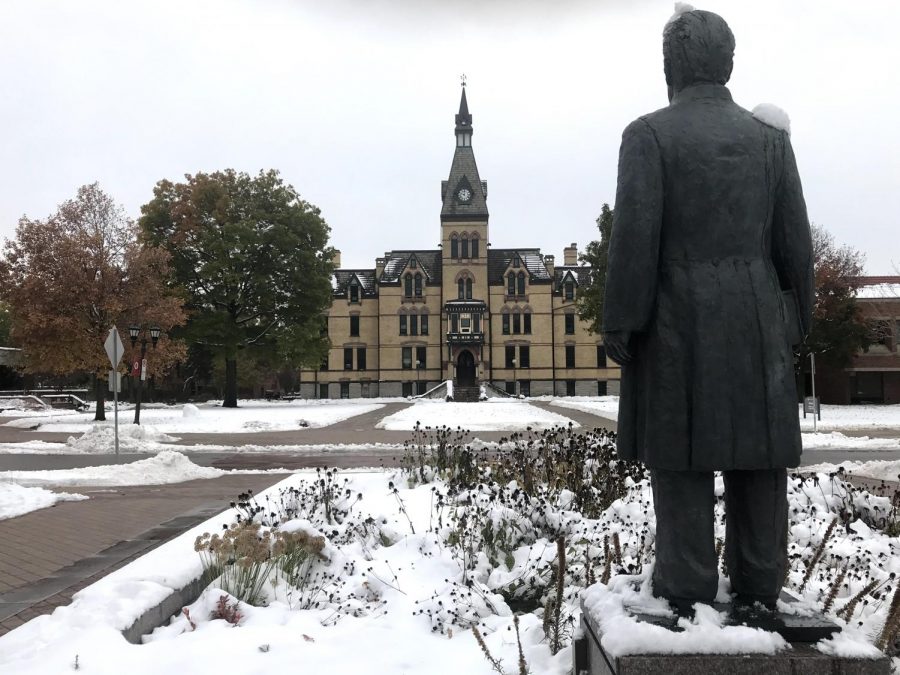Acknowledging land and history
HUSC is working to remember the history of Hamline and its place on Indigenous land.
Antonio Risso
After Hamline established itself on the land once belonging to Dakota and Ojibwe people almost a century and a half ago, HUSC has created a new resolution to acknowledge
the history of the land, who it once belonged to and the treaties broken by the government that allowed for the land to be forcefully taken from Native people.
November 18, 2020
Hamline has occupied its current location in St. Paul since 1880, but the history of the land prior to that has never been officially acknowledged. This is set to change with the introduction of a resolution to HUSC that would recognize both the history of the land and the Indigenous people who once lived on it.
The resolution is a formal land acknowledgment following the guidelines set by the Minnesota Indian Affairs Council that brings focus to the broken treaties with the Dakota and Ojibwe tribes, which led to much of their land being forcefully ceded to the government of the United States. It also pledges to help counter historical and contemporary injustices faced by Indigenous communities.
For many Hamline students, this is an important step forward in acknowledging the university they attend and respecting those who were there even before its creation.
“We forget about the past, and I feel like the land acknowledgment takes a step to recognize the people who were here,” said Emily McKenzie, a sophomore and president of Hamline Indigenous People’s Society (HIPS). “Everyone forgets who was here first.”
The resolution also comes during Native American Heritage Month, which is dedicated to Indigenous heritage, culture and history.
This resolution follows the lead of a number of other universities in Minnesota that have created similar acknowledgments in the past few years, including the main campus of the University of Minnesota.
“I’m glad it’s being done. It should have been done a while ago,” said Myrka Zambrano, a sophomore and the treasurer of HIPS. “We need to do a better job at remembering the people who were here first.”
In addition to the formal recognition, the resolution encourages verbal acknowledgments at the start of events and the beginning of each semester. The resolution also suggests the creation of a page on Hamline’s website devoted to acknowledging the land and providing resources and information about Native history and culture.
This is one of the main goals of HIPS, which encourages students of all backgrounds to learn about and engage with Indigenous communities and their histories.
“Our history, the land that we’re on, that’s important to recognize,” Zambrano said. “People were here and they were displaced.”
Zambrano and other members of HIPS hope that the land acknowledgment is just the beginning of Hamline doing more to include and celebrate Indigenous students. They are also wondering whether more tangible actions might also be taken to support native communities.
“I think Hamline should do a better job at reaching out to schools that have a majority population of Indigenous people, and trying to promote the diversity of Indigenous people in our community,” Zambrano said.
In the meantime, Zambrano calls the HUSC resolution a “step in the right direction,” and an important part of acknowledging the painful history of Native people that is too often overlooked. For her, it is also a way to say something equally important about their present: “Indigenous people are here.”
The HUSC resolution was voted on 11/17, and an update on its status can be found online at hamlineoracle.com.


